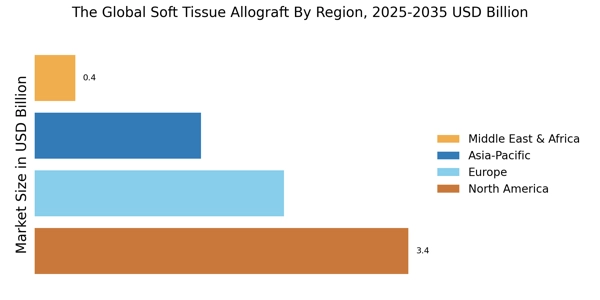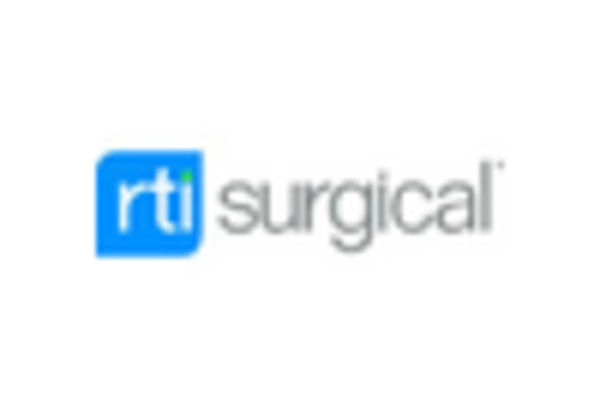Soft Tissue Allograft Market Summary
As per MRFR analysis, The Global Soft Tissue Allograft Size was estimated at 7.53 USD Billion in 2024. The soft tissue allograft industry is projected to grow from 7.978 USD Billion in 2025 to 14.22 USD Billion by 2035, exhibiting a compound annual growth rate (CAGR) of 5.95 during the forecast period 2025 - 2035.
Key Market Trends & Highlights
The Global Soft Tissue Allograft is poised for substantial growth driven by technological advancements and increasing demand for tissue repair.
- North America remains the largest market for soft tissue allografts, driven by advanced healthcare infrastructure and high patient awareness.
- The Asia-Pacific region is emerging as the fastest-growing market, fueled by rising healthcare investments and a burgeoning population.
- Musculoskeletal allografts dominate the market, while vascular allografts are experiencing rapid growth due to their increasing application in surgical procedures.
- Key market drivers include the rising geriatric population and growing awareness and acceptance of allografts, which are propelling demand across various segments.
Market Size & Forecast
| 2024 Market Size | 7.53 (USD Billion) |
| 2035 Market Size | 14.22 (USD Billion) |
| CAGR (2025 - 2035) | 5.95% |
Major Players
AlloSource (US), MediGraft (US), Tissue Regenix (GB), Organogenesis (US), RTI Surgical (US), Smith & Nephew (GB), LifeNet Health (US), Cure Medical (US)


















Leave a Comment